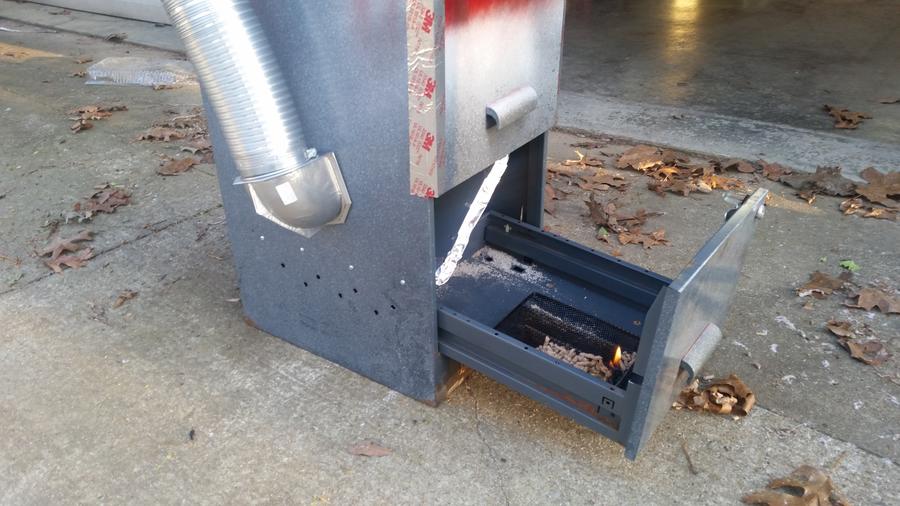I am in awe of that build and have read that thread many times.
However, I am not convinced that you need to add
that much pipe in order to both cool the smoke and condense the bad stuff.
I am still a relative neophyte, so bear that in mind as I offer the following suggestion. I also offer this because of what I learned in years of engineering, namely, you design in increments, and then start doing modifications. By doing things this way, you know if you are really making a difference, and you don't waste both time and money building what may turn out to be a severely "over-designed" contraption.
So, my recommendation is to build your mod and use just a few feet of tubing. Do a smoke and then inspect the tubing to see how much gunk is in the tubes. When I built my external "mailbox mod" I made a mistake and bought the wrong duct to extend the distance between the external can and the MES. Here is the thread that describes my experience:
Mailbox (Popcorn) Mod (with a small twist). As you will see if you read that thread, I ended up with nothing more than two short elbows between my external can and the MES. I am actually not tempted to add any more duct. Read below to understand why.
I started experimenting with using a filter instead of simply adding more and more and more lengths of duct, a design approach that results in a product that is tedious to build and install, impossible to clean, and difficult to store. I don't know what it might be like in a wind.
While my initial filter material was a total failure, the Scotch Brite stainless steel scrubbers are working amazingly well, and are collecting 100x more gunk than the duct. This is not a mindless statement but instead is based on actual measurement. I am able to clean every part of my external smoker in my ultrasonic cleaner between smokes. My little lengths of duct get light brown inside, but the filter gets full of gunk (I posted pics on the 2nd page of that thread). When I put the duct elbows into the cleaner, I can see the stuff come off, and the cleaning solution gets darker from the gunk, but is still somewhat clear. However, when I put the filter in there, the cleaning solution turns almost black. There simply is no comparison: the filters are far, far more efficient at collecting gunk that then duct.
There is a reason why you see filters in so many industrial processes involving cleaning particulate matter out of gasses.
Then, if you take a look at the pics of the can lid (on page two of that thread), you'll see that it has more gunk than anything else. If I were to sketch out a design of something that might work even better than my current design, I'd create something with the
thinnest possible metal for the lid, and then create a cone-shaped container so that the top was as large as possible. You want the thin material so that the outside air keeps it at ambient temperature (if you put water into two glasses of different thicknesses, the thinner one will condense the water from the air more quickly).
So, even if you don't want to build something like I built, I would recommend you start with almost no duct, but then add a filter. Then, buy three feet of duct, insert that, and see how much stuff is in the duct after 5-10 hours of smoking, and compare that to what was collected in the filter and the can.
In case you don't get around to reading that other thread, here are a few pics from that thread to go with what I wrote above:
Before the smoke:
After the smoke:
I did not show the inside of the duct (shown at right), but it was very, very light brown -- absolutely
nothing like the filter and the lid.
















